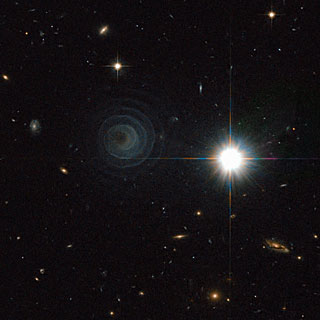If you’ve got a few minutes check out the European Space Observatory site and specifically this link, which shows the difference between what we see in the visual part of the spectrum, versus the infrared part of the spectrum in a 38 second movie.

There is great interest in the barred spiral galaxies because it is believed that our Milky Way is also a barred spiral. NGC 1365 is about 200,000 light years across, which makes it about twice as big as our home galaxy. This galaxy is about 60 million light years from us and is part of the Fornax galaxy cluster.
If you’ve got a few minutes, check out the site. As you’re gazing at this incredible island of stars, think about how many planets may orbit the 400 billion or so stars in this galaxy, and of those, how many may have life looking back at us in equal awe and wonder…
Till next time,
RC Davison


